Vintage Finds from Audemars Piguet, Vacheron, Gallet, and More
And is the watch industry dying?!
This newsletter is about the watches! A few weeks ago, I wrote about the (gloomy?) future of the watch industry, and more not-so-good numbers have come across the wire since, courtesy of LVMH, Swatch, and Richemont earnings. But let’s not kick the guy while he’s down and just look at some cool vintage watches, shall we? Like the last update when we visited the Patek Museum, this one’s full of photos.
I went over to Hindman here in Chicago to preview today’s (!) Watches & Accessories sale and saw a few vintage watches – nothing crazy, but a few lots that lend themselves to discussion. Let’s take a look. After that, my podcast appearance with Collective Horology on the state of the watch industry, recent articles, and a couple more vintage finds.
In this update: Audemars Piguet, Domino’s, Gallet, Intersect L.A., Patek Philippe, Rolex, Vacheron Constantin, and is the watch industry dying?
An honest Audemars Piguet Disco Volante (Lot 103)
I’m going to do a full write up on the vintage AP Disco Volante for Hodinkee, but it’s a beautiful, early Gerald Genta design.1 The green satin strap on this example is signed by AP and seems original to the watch. It’s literally screwed into the case underneath the caseback – a cool design feature but also a little impractical. You might think 36mm with no lugs wears small, but the oddball presence of the Disco Volante (“flying saucer”) punches above its weight.
The dial clearly has some blemishes, to be expected for a ‘70s dress watch, but presents nicely. The Gubelin signature is a nice bonus:
Another AP Disco Volante recently sold at an Italian auction for $15,000, but it had the – in my opinion – more attractive two-tone dial. This one has an estimate of $2-3,000. I’d bet it surpasses that, but not by much. Watches like this test the outer limit of the general narrative that “design-driven watches are so in.”2
Examining an example of my favorite Vacheron chronograph, ref. 4072 (Lot 53)
If you’ve been following for a while, you know the Vacheron chronograph 4072 is one of my favorite references. A 34mm chronograph produced for nearly 40 years, it’s one of the first references we covered in-depth here. Years later, it’s still a favorite, even if – in fact, maybe because – attention for it hasn’t grown much since that 2020 article.
It sounds like this example was once part of Vacheron’s Les Collectionneurs, its program for fully restoring vintage watches and displaying them at boutiques before eventually selling them. As part of the program, Vacheron restores the case, dial, and movement. I vastly prefer an original watch if I can get it, but it was interesting to get up close with this 4072 – I’ve seen a couple of original examples in the past few months (this Phillips example and one sold by Menta Watches, below), and you’ll notice the differences.
Now, compare that to this beautiful pink-on-pink 4072 I saw in Miami earlier this year:
In person, the first example just feels more like a modern watch, from the dial to the wind of the crown. (Also note the thicker and sharper lugs in the second example.) That said, the Les Collectionneurs is an interesting way for Vacheron to promote its vintage watches and I think they’ve done a good job with it. The watch comes serviced, with a certificate of authenticity, and a $20-30,000 estimate.
Two more watches I’d actually wear
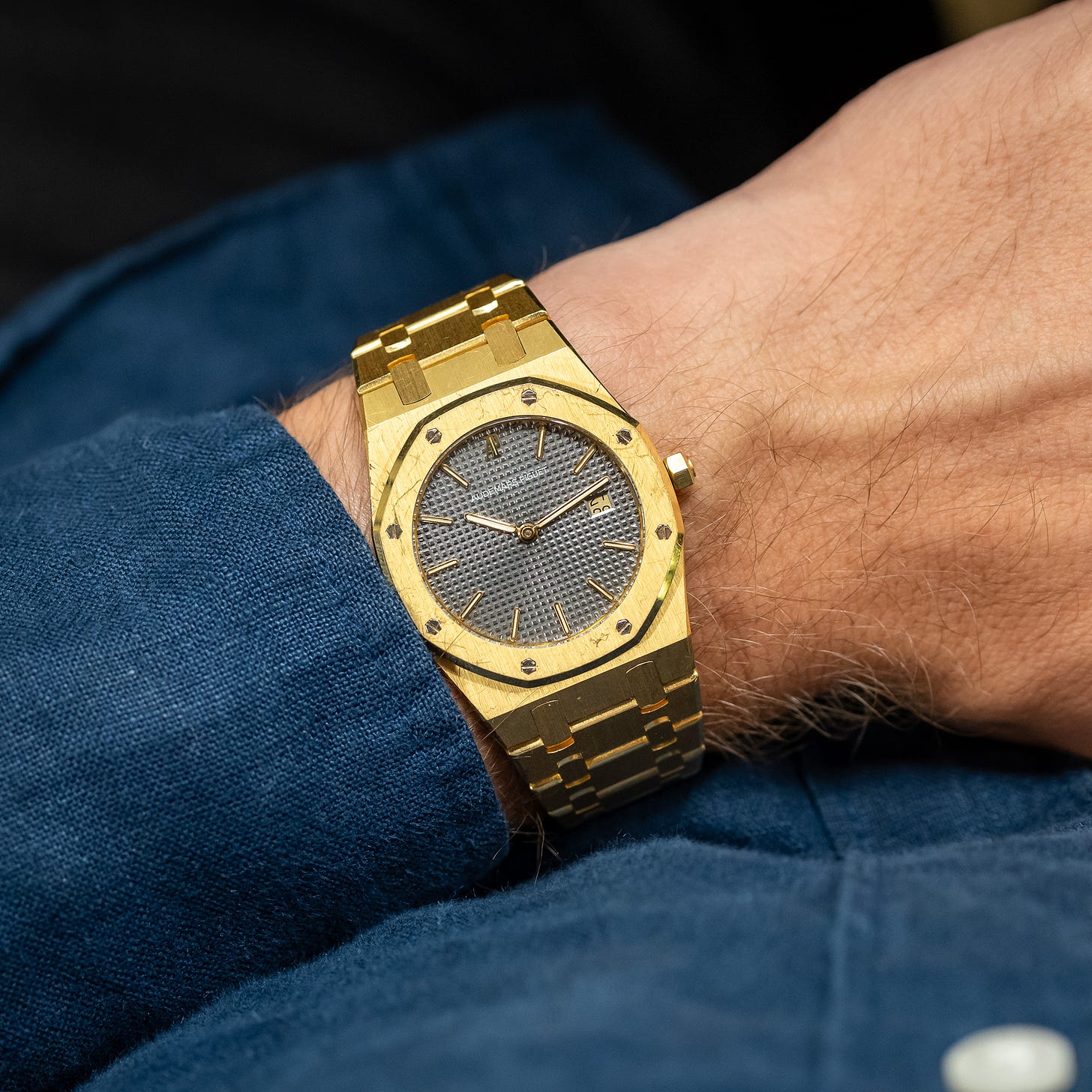
This is an Audemars Piguet Royal Oak ref. 56175BA from the ‘90s. It’s 33mm and quartz, and honestly, might be my favorite Royal Oak size right now. The midsize ref. 4100 (35mm) and 14790 (36mm) get more attention and rightfully so since they still use mechanical movements. But the Royal Oak has always been primarily about the design, so I don’t care as much if it’s quartz. More broadly, it’s starting to look like a great to time buy a Royal Oak if you’re into that type of thing. Est. $15-20,000.
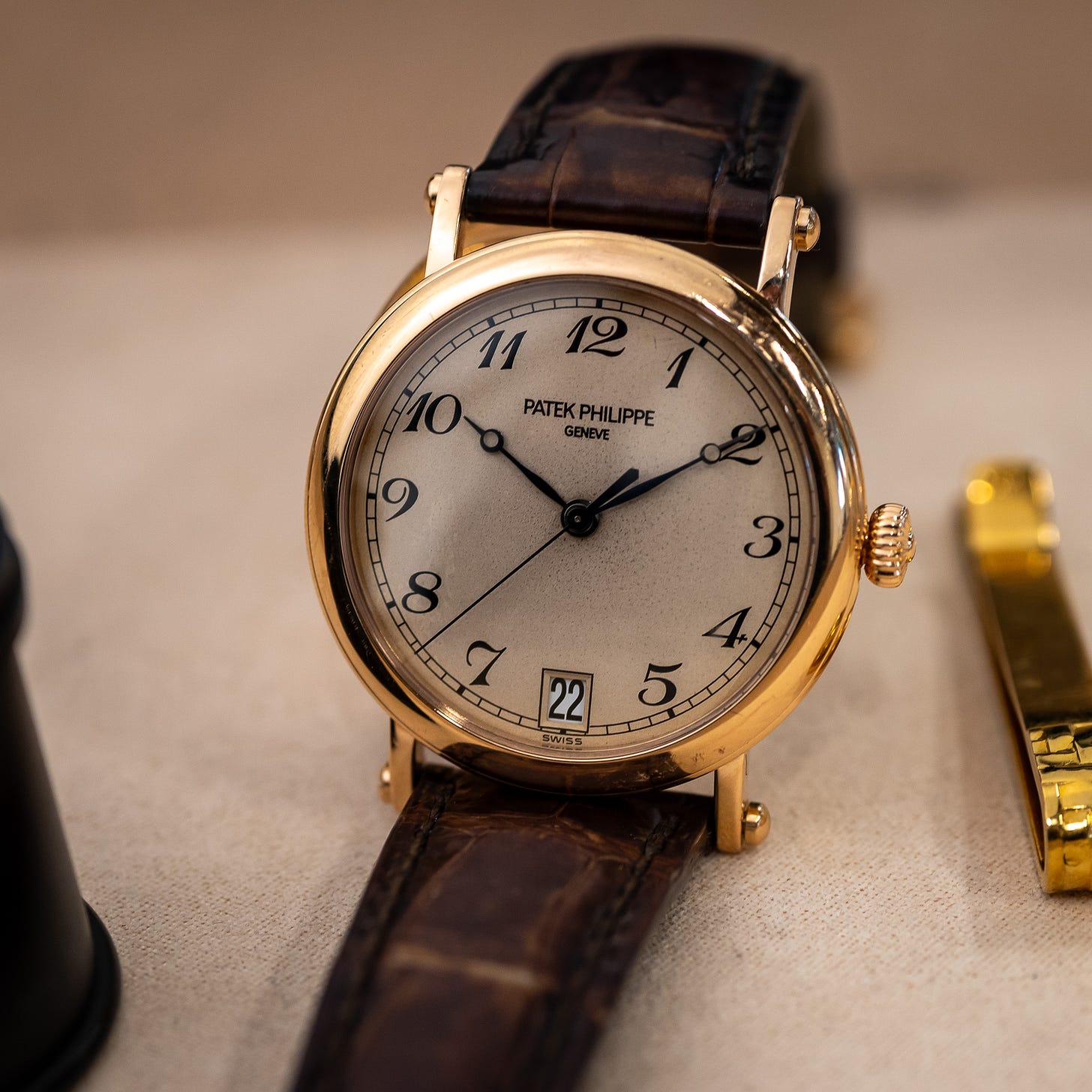
Finally, this is a Patek Calatrava ref. 5053, produced from 2001–2009, but it has many traditional Calatrava cues. Breguet numerals and hands, cream dial, soldered straight lugs, and an officer-style caseback. In photos, this lug design had always bothered me, but in person it works with the design’s overall vibe. This particular example has some wear in the middle of the dial but otherwise makes for a nice dress watch.
Patek first brought the officer’s caseback to the Calatrava in 1989 with the ref. 3960 to celebrate its 150th anniversary. Collectors liked it, so Patek soon brought the hinged caseback into general production with the ref. 5052 (no date) and 5053. While the 5052 has a more balanced design with its sub-seconds at 6 o’clock, the 5053 tugs at those same mid-century heartstrings.
Articles of the Month
Collective Horology was kind enough to have me on their podcast to discuss whether “the watch industry is dying.” The title is hyperbolic, sure, but I enjoyed the discussion, and I’ve probably gotten as many compliments about this podcast appearance as for any Hodinkee Radio I’ve done, so thanks for that guys. I think we really got cooking in the last 15 minutes or so. Apple Podcast link above, and here’s the Spotify link.
✍️ Elsewhere:
🍕 Domino’s Rolex Air-King And A Slice Of Pizza, I’ve always wanted to take photos of one of those Domino’s Air-Kings inside a greasy, garlicky pizza box, and it finally happened on a quick trip to Milwaukee.
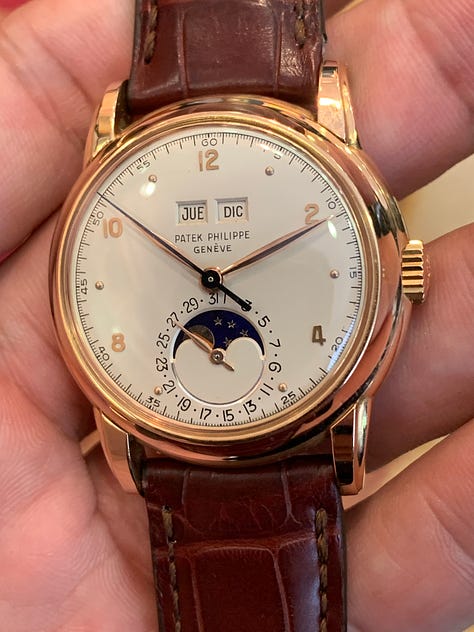
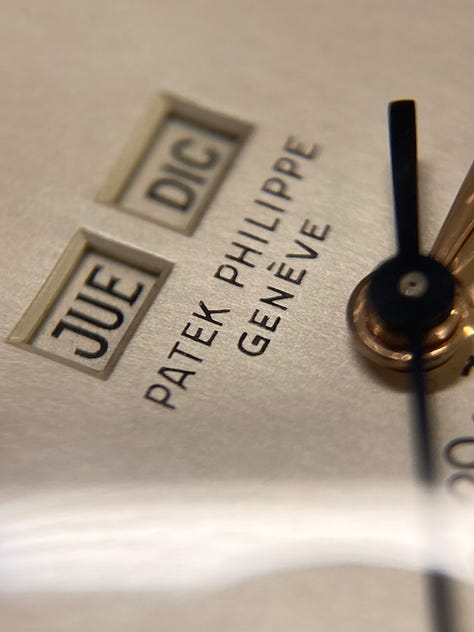
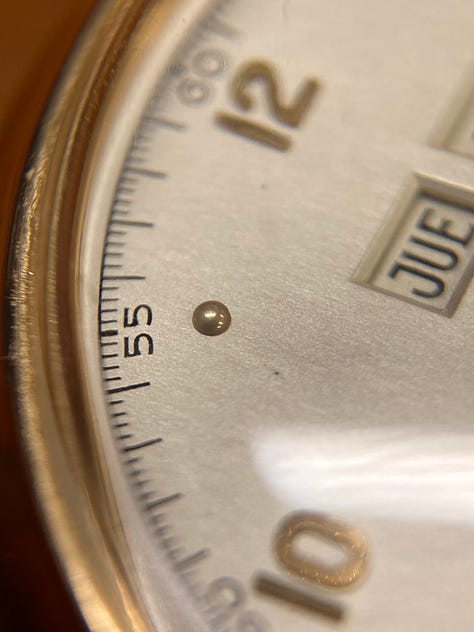
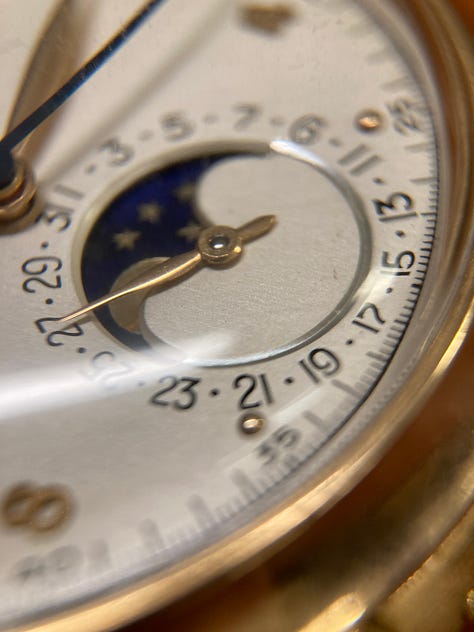
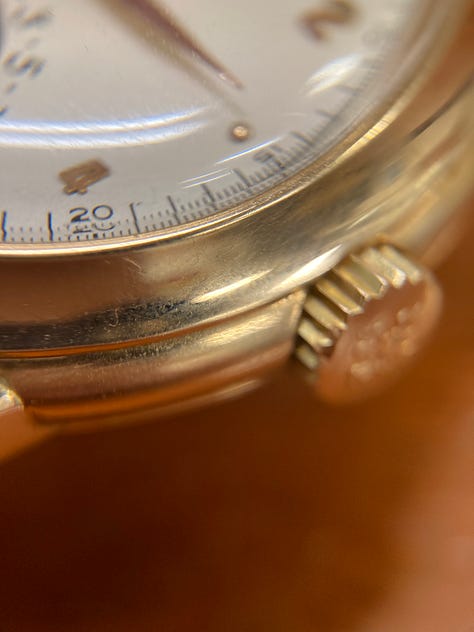
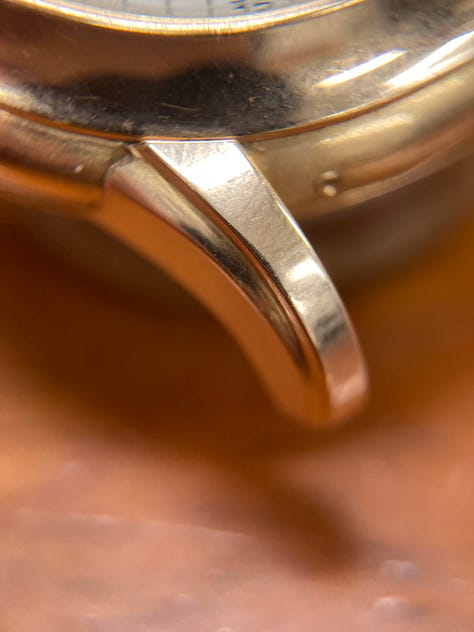
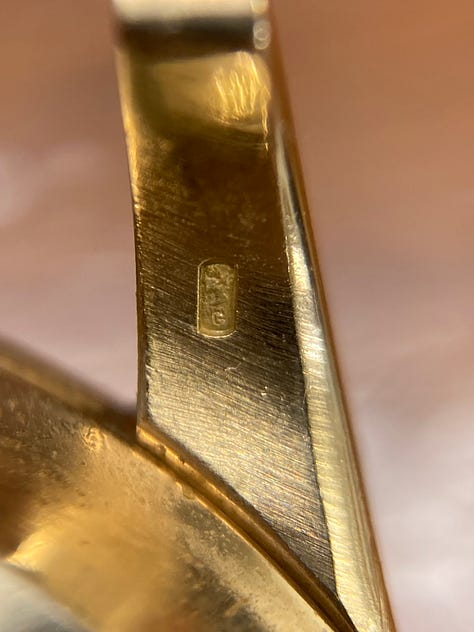
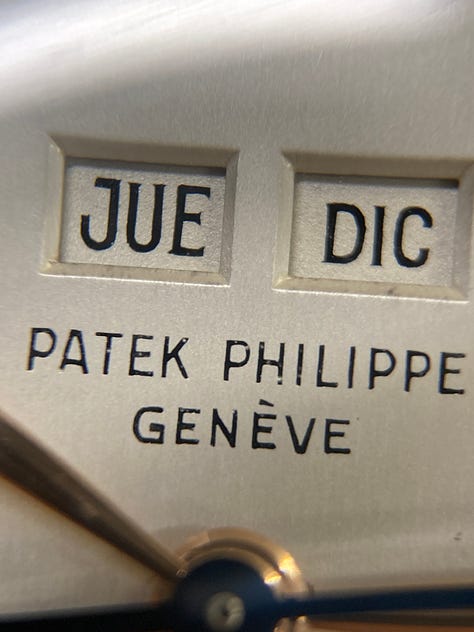
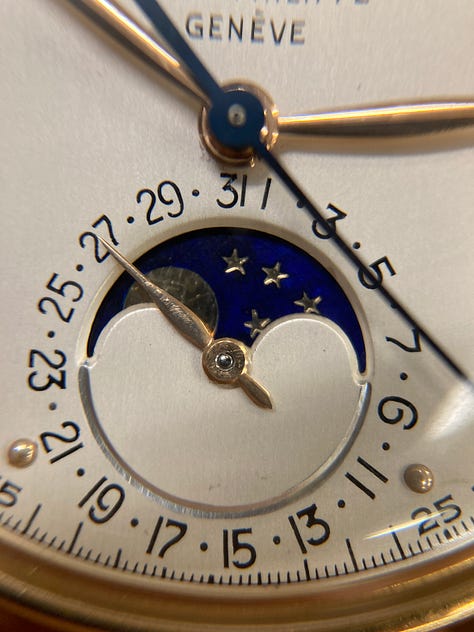
🌹A Patek Perpetual Calendar Sells For $1 Million, and a gorgeous pink-on-pink 96 for $89,000. Thanks to Ignacio of Ancienne Watches we’ve got some great photos documenting the details of these watches. I explore a bit what it means that a Patek can sell for $1 million pretty much anywhere nowadays. On the website version of this post (click the headline at the top of this email), I’ll add all the macro photos for posterity (30+ photos).
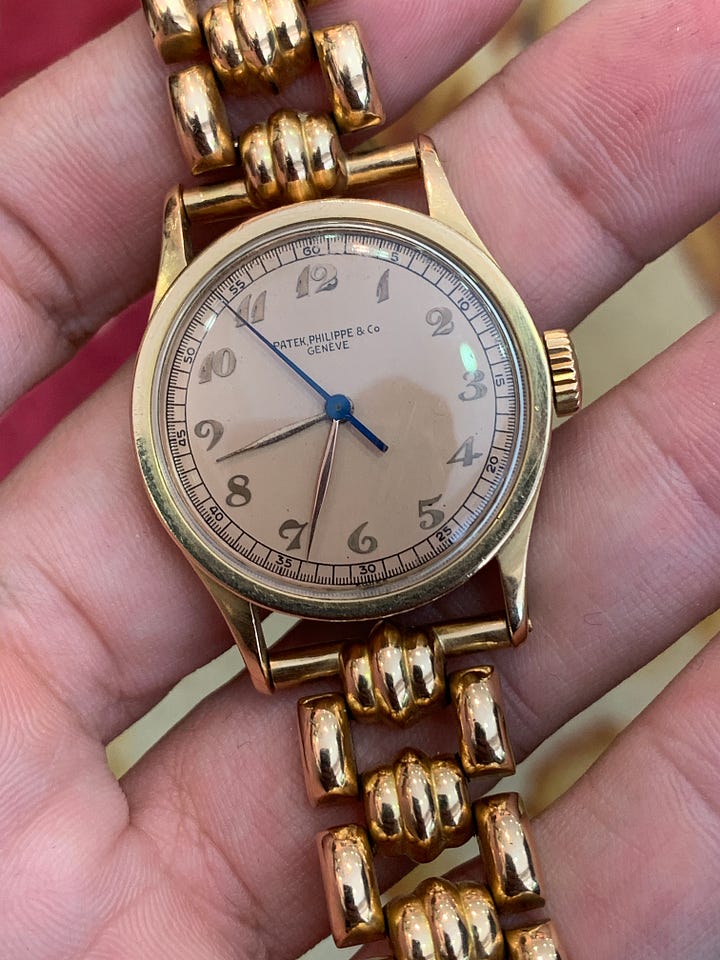
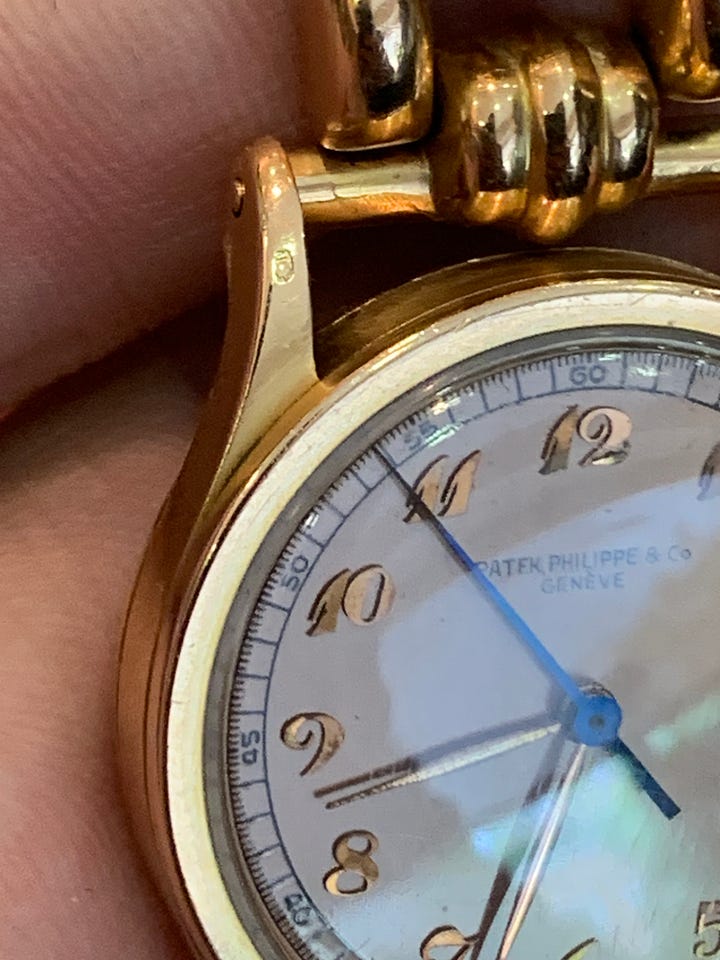
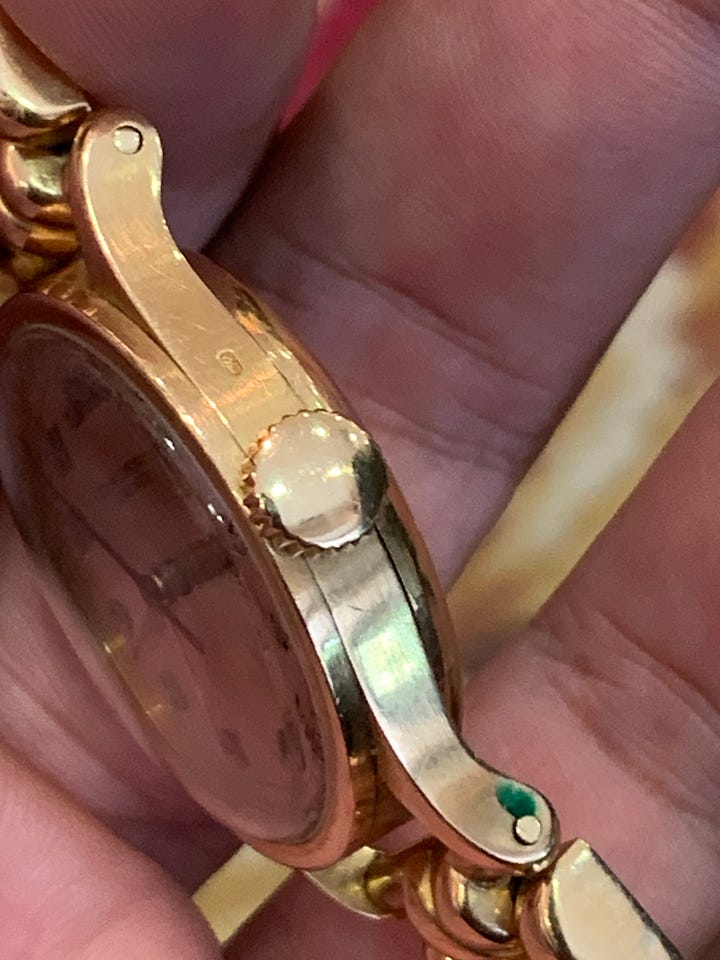
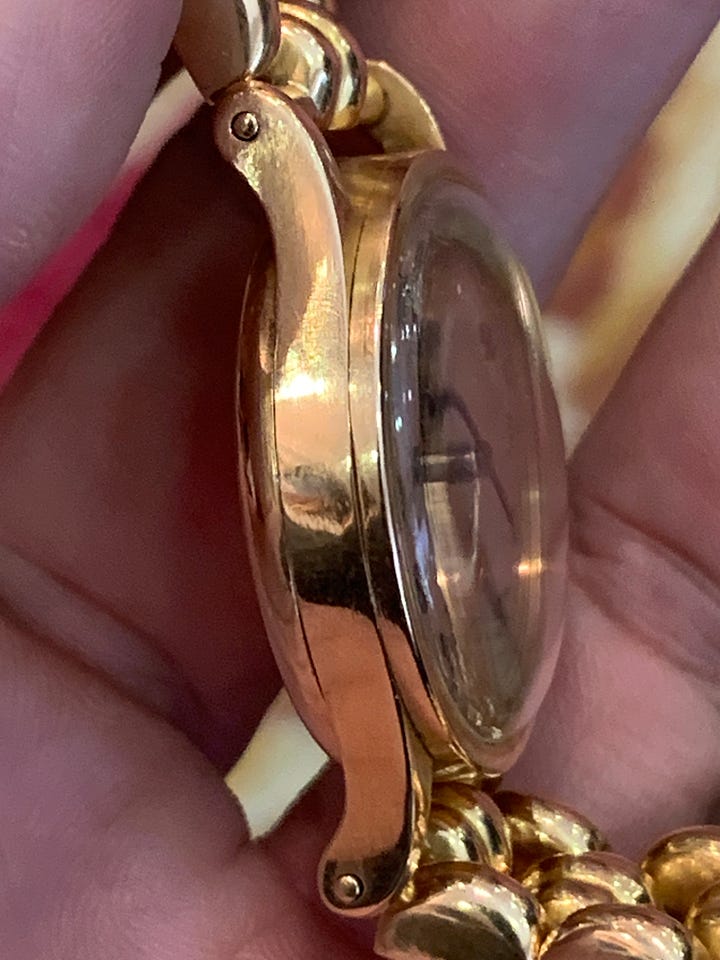
🎥 Gallet Filmeter, and for one last vintage find at auction this week, here’s a rare Gallet on eBay:
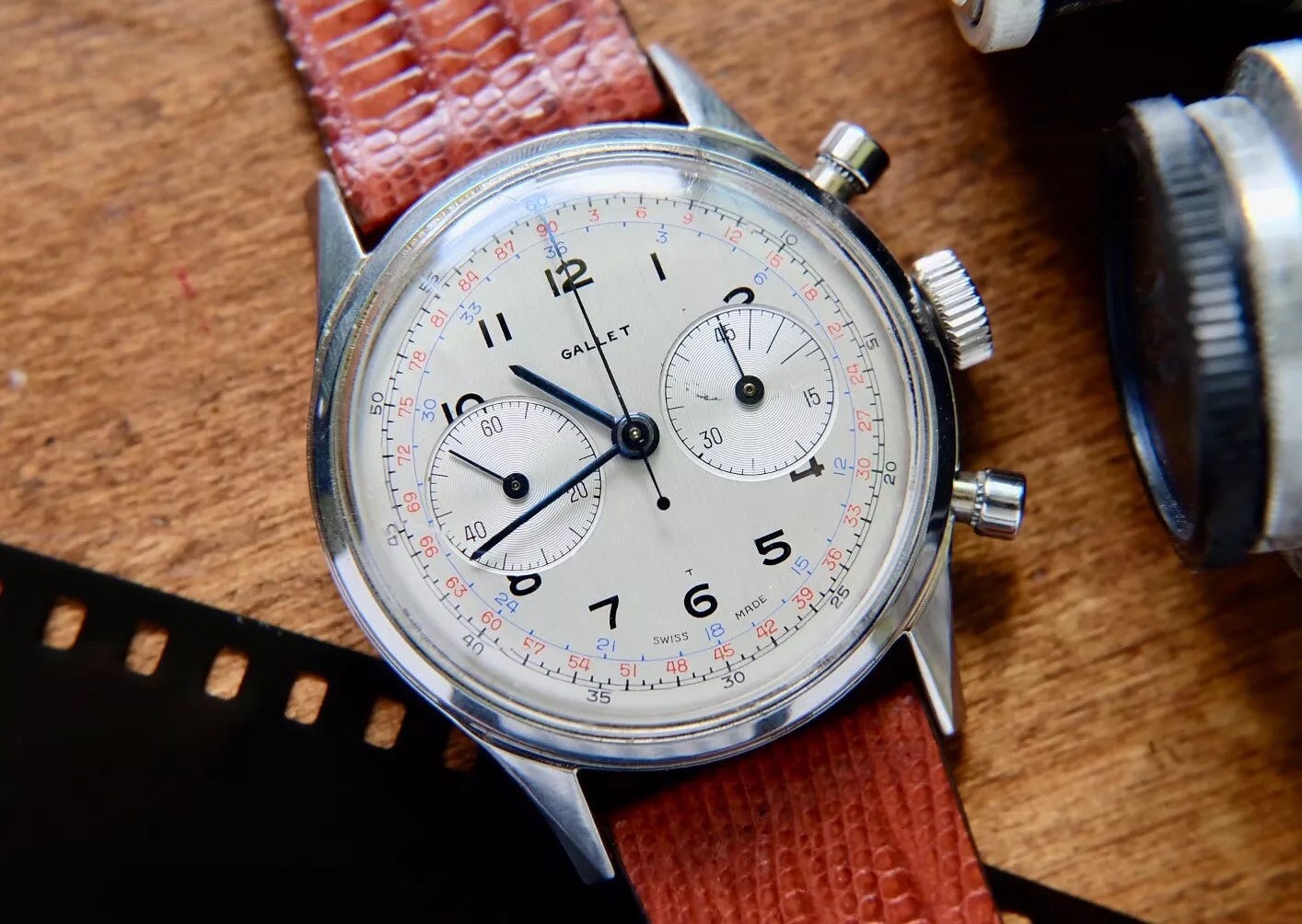
I’ve written about the Universal Geneve Film Compax before, but the Gallet version, the Filmeter, is just about as rare. The red scale is calibrated to 35mm film, the blue to 16mm – old standards for the movie business.
It’s from an era when chronographs had all kinds of scales for anyone doing anything: time a lap, check a pulse, shoot a movie. And these film ones are some of the most obscure, really only found from UG and Gallet. This one’s on eBay, closing Sunday.
Finally, I recently discovered this YouTuber who’s an architecture professor here in Chicago. He makes some great explainers on architecture and design, many focused on buildings in Chicago, e.g., this video on the city’s newest lakefront skyscrapers or this one on Wrigley Field.
This week’s newsletter is shorter, but I’ll be back soon. I’ll also be at the Intersect Los Angeles Show this weekend, so if you’re in the area, come on by and say hey.
-Tony
But as others have pointed out, Genta certainly seems to have taken inspiration from the Art Deco era.
I’ve always been skeptical that this is true at scale!





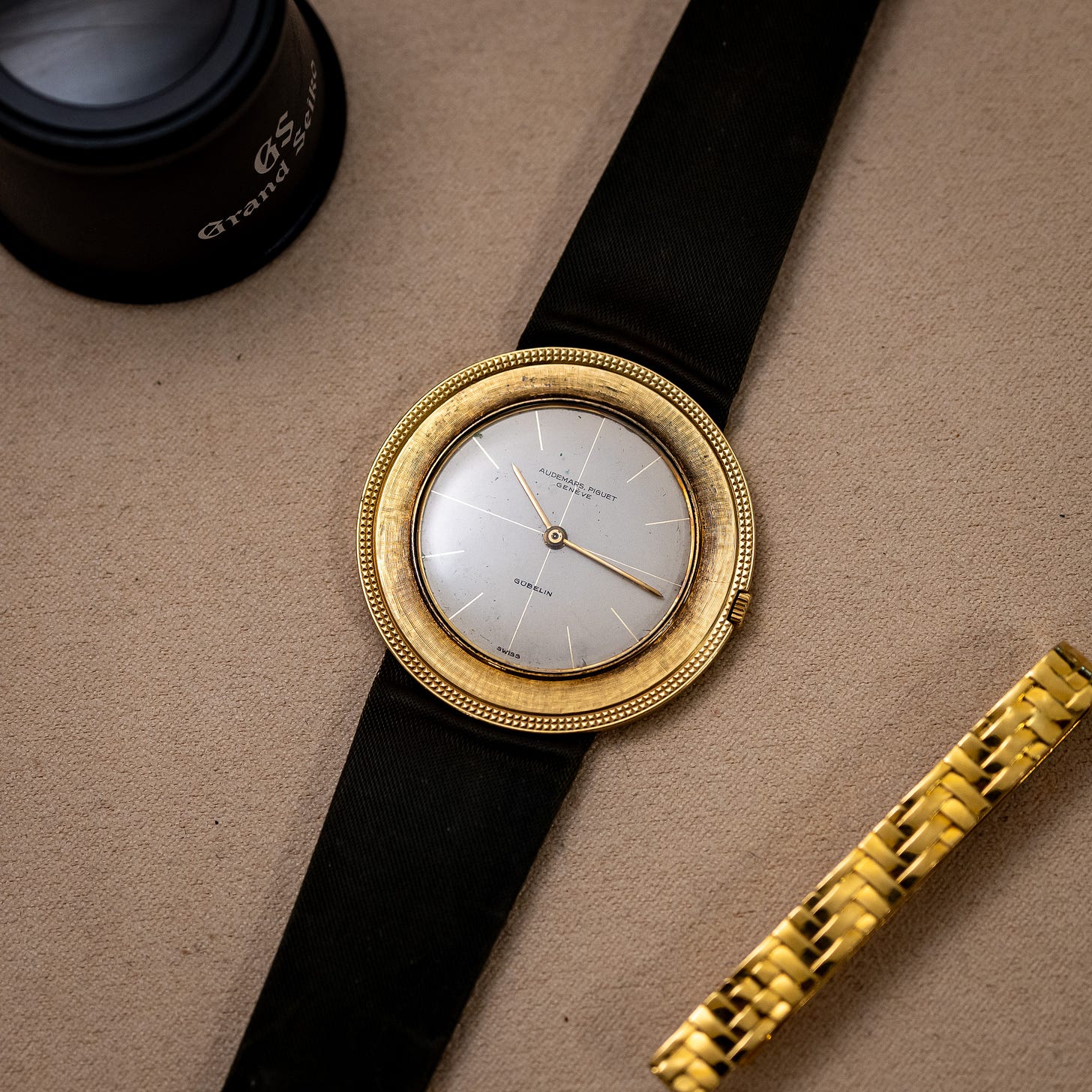
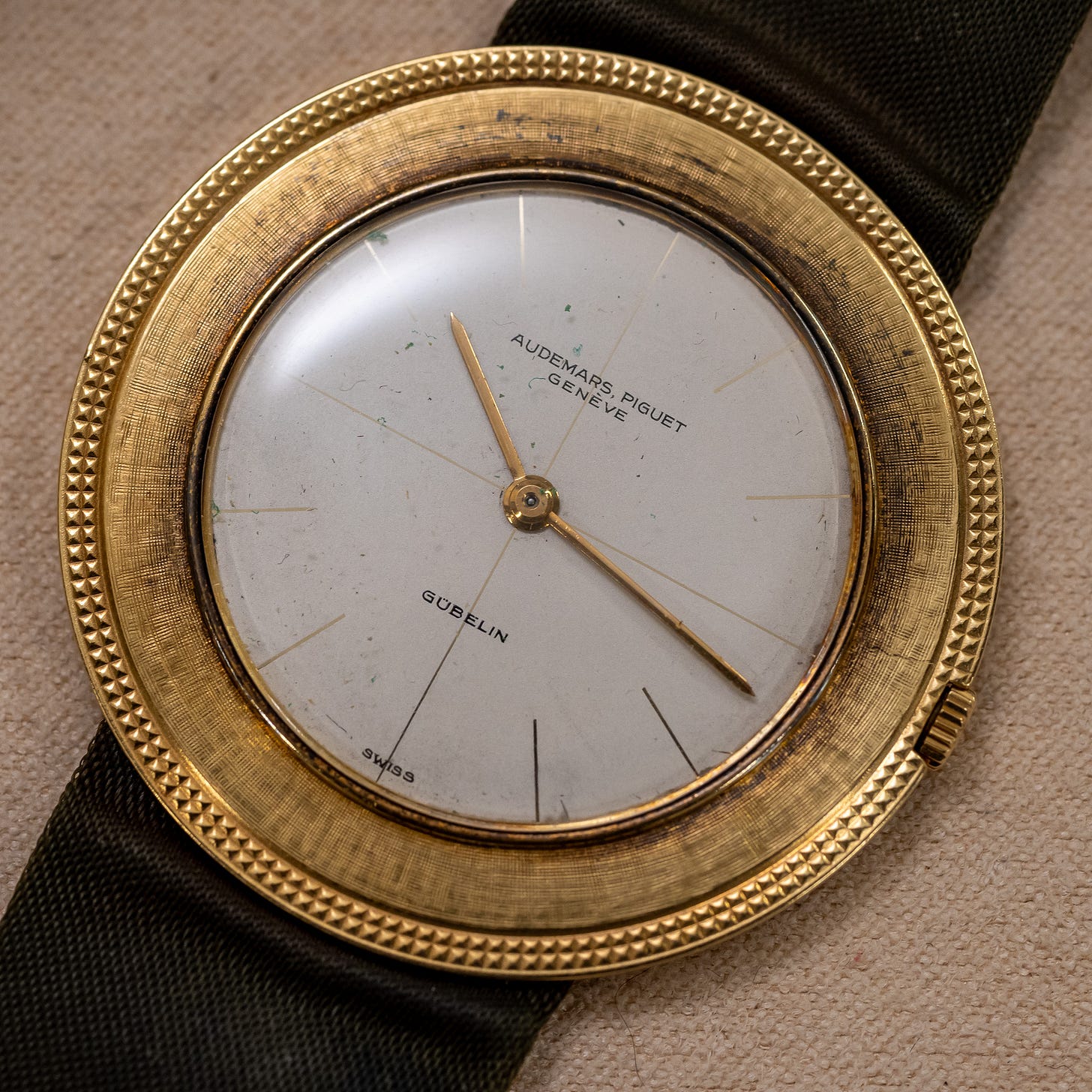
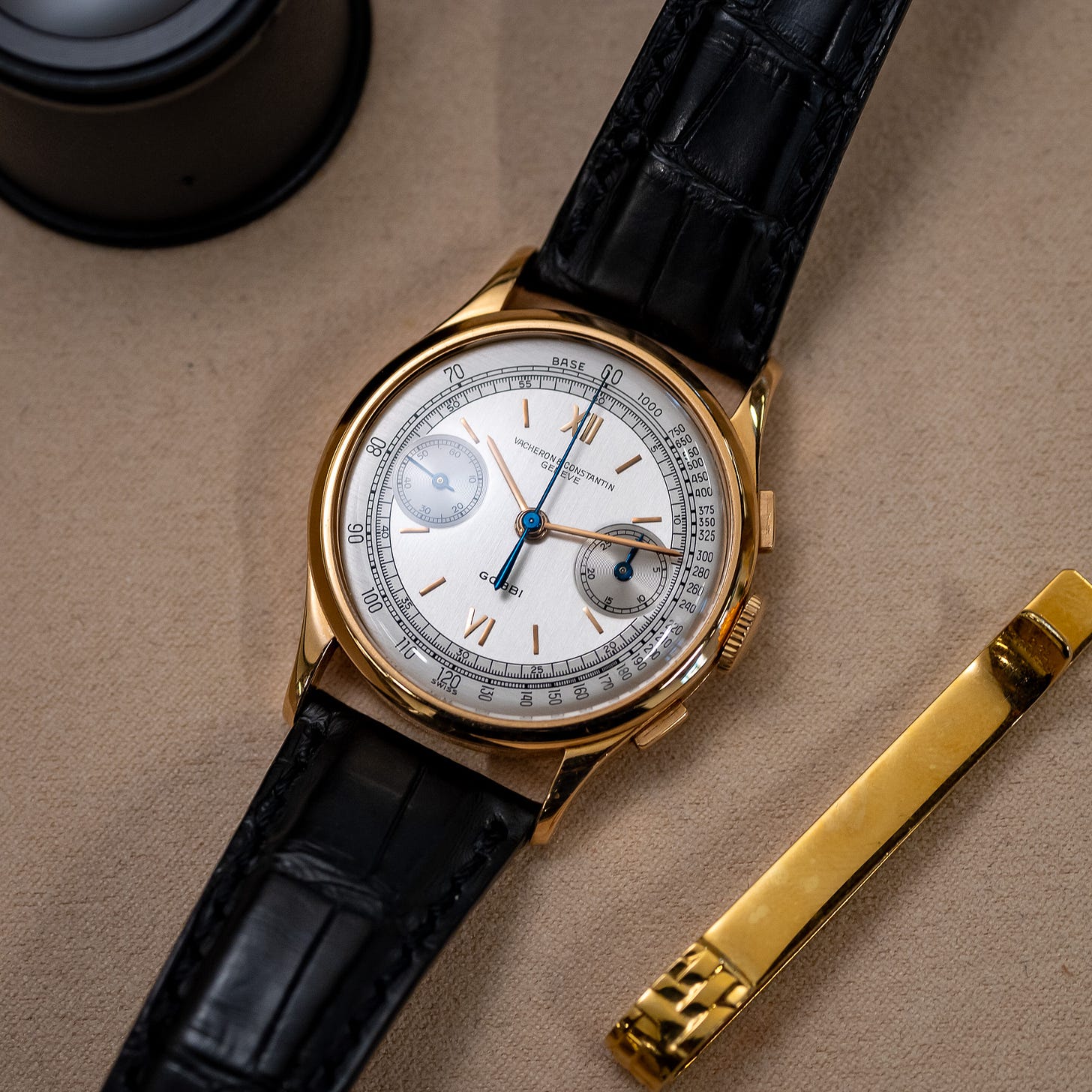
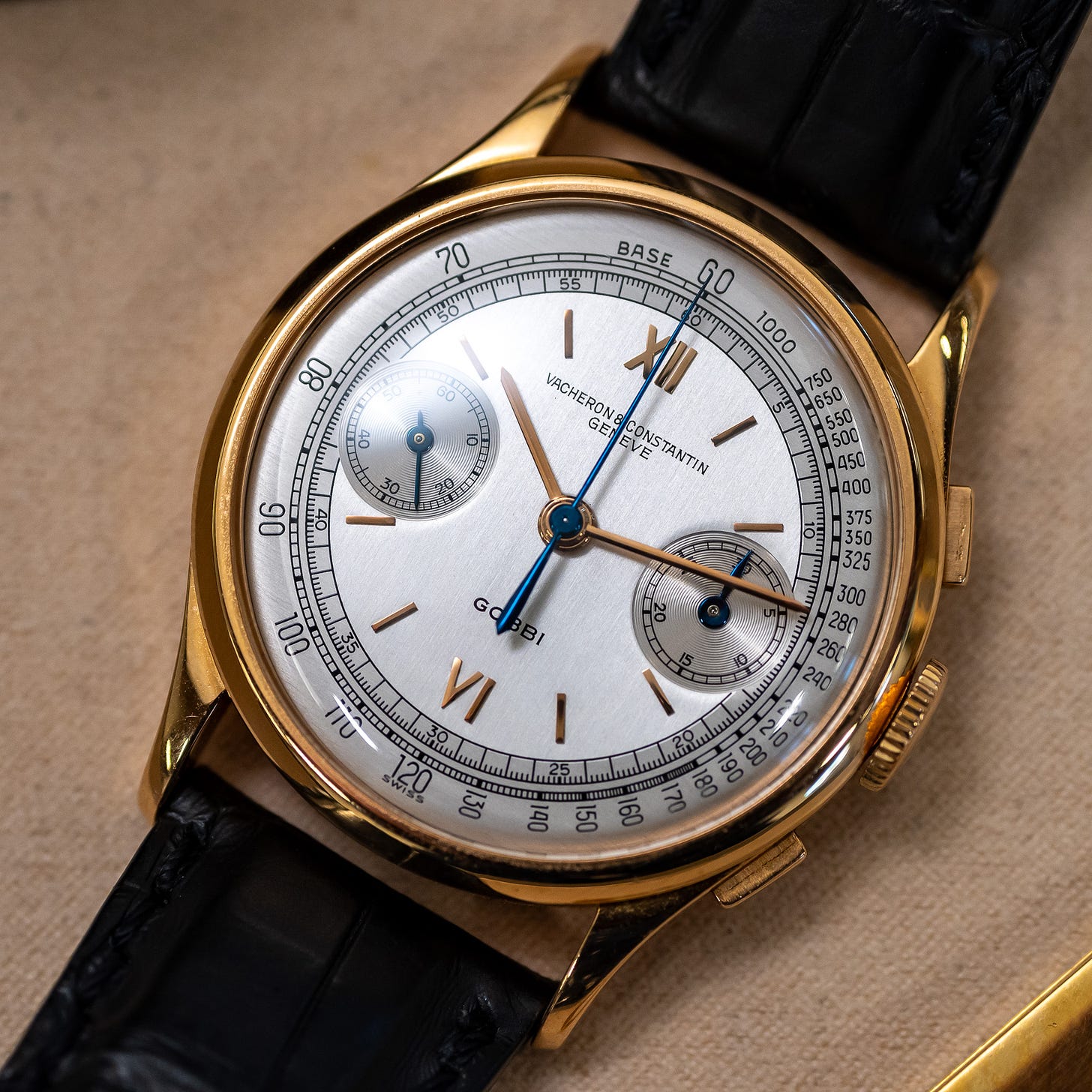
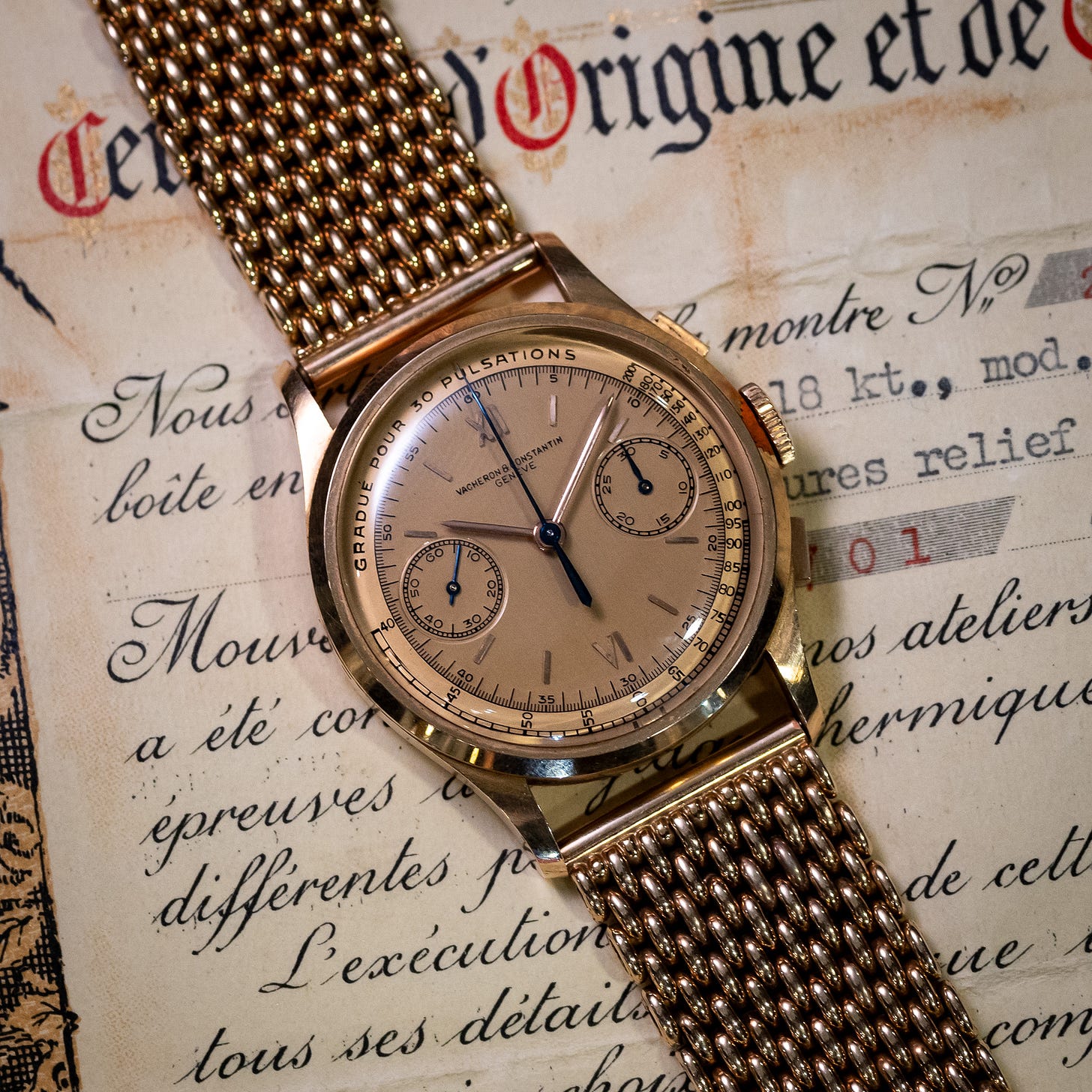
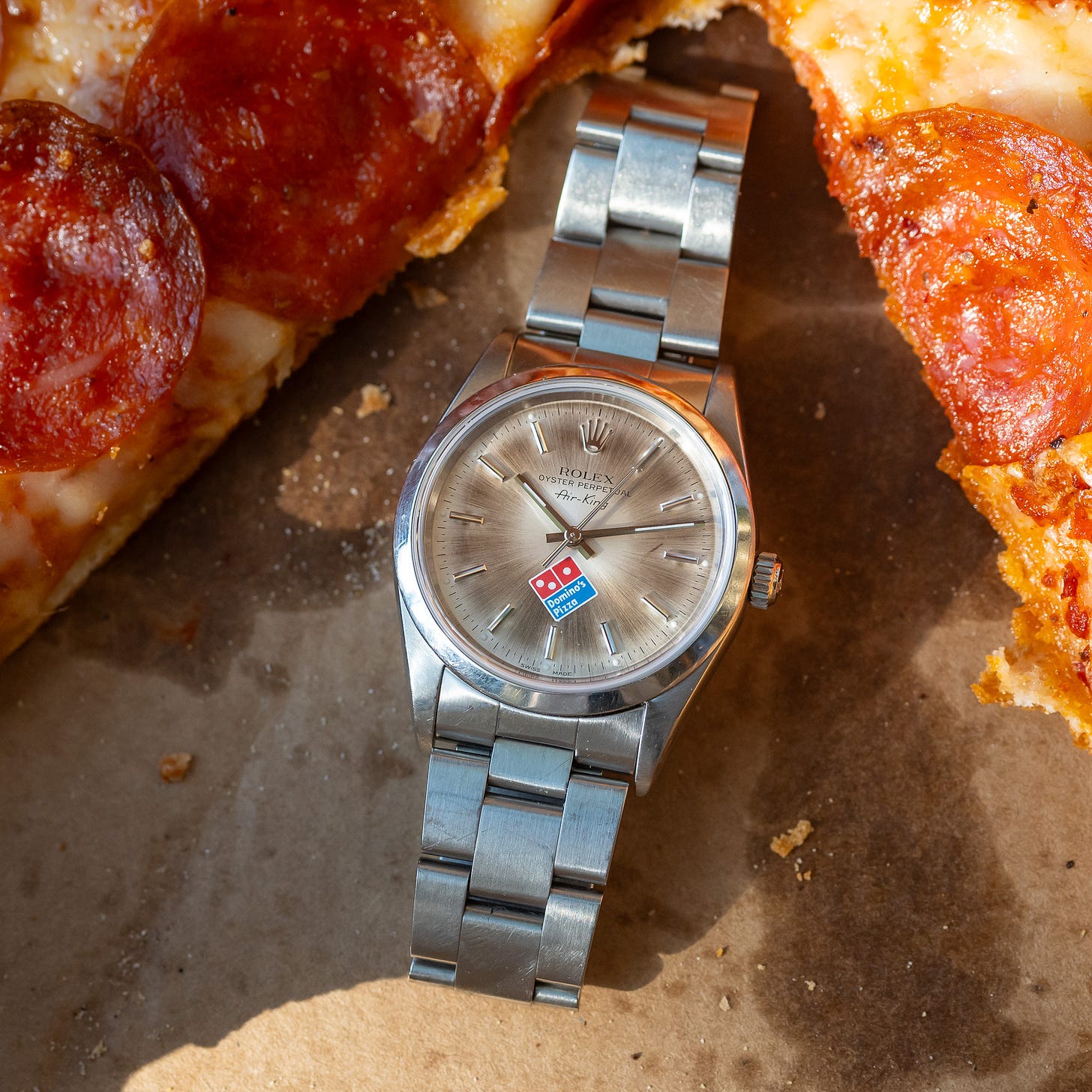
The honesty on the Openwork podcast was insightful. Felt genuine.